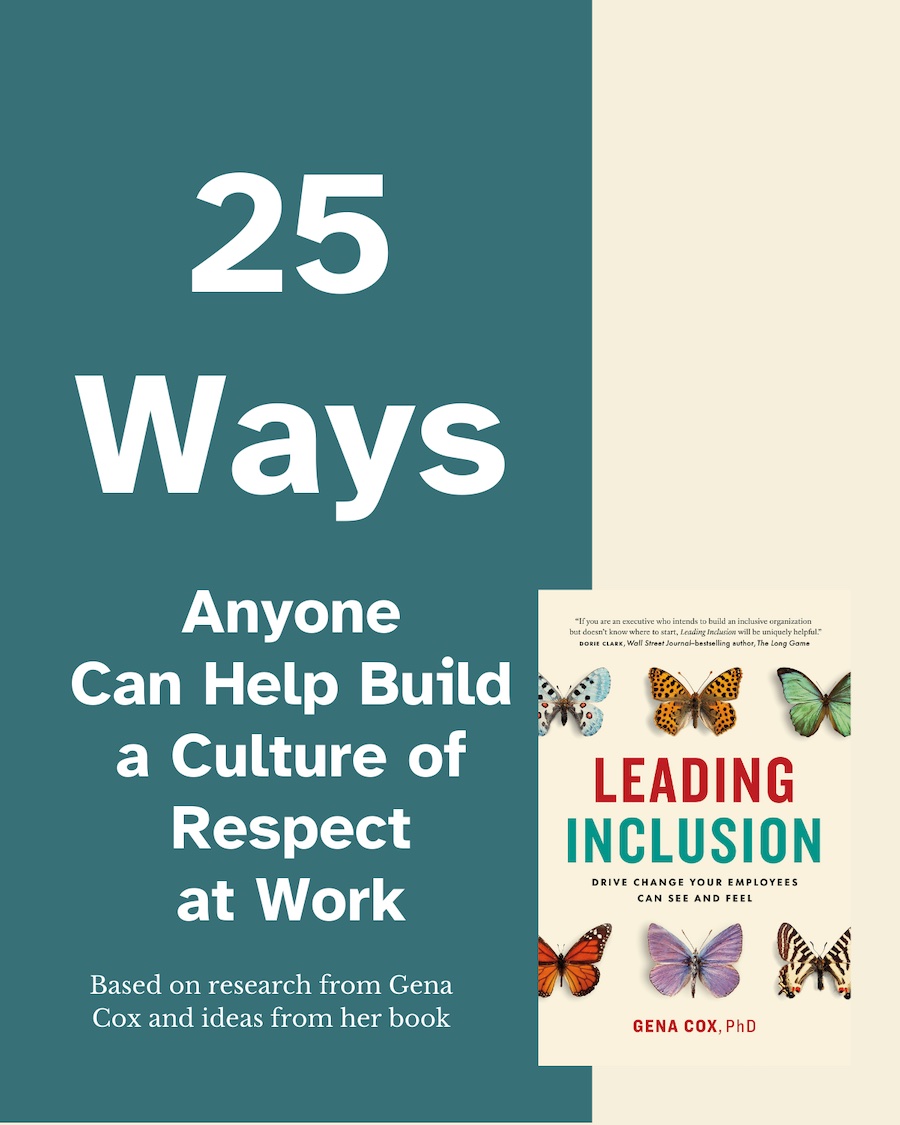Profit and Common Good: The new CEO workforce diversity focus

For a long time, business leaders have known that workforce diversity positively affects many outcomes they value, including profits and innovation and decision-making. Nevertheless, that “business case for diversity” has not been sufficient to cause a rush to demographic diversification in corporations.
Despite its current omnipresence in the media, workplace diversity is not treated as a strategic priority in most businesses. Senior leaders of organizations seem reluctant to openly discuss workplace diversity with the frequency and volume with which they tackle other business issues. Additionally, corporate leaders do not approach problem-solving about diversity and inclusion (D&I) with the same lens they bring to other business challenges.
D&I is typically framed as “the business case”
Workplace diversity and inclusion issues are often framed through the lens of “the business case”. The framing of this approach implies that action is only warranted if it is cost-effective. This leads to errors like:
- Non-strategic positioning:
- Declining the opportunity to define the D&I as a strategic imperative.
- Framing the work as occurring “over there” in a siloed slice of the organization.
- Missing the opportunity to say “we are all in this together”.
- Assuming that only employees from under-represented groups care about, or should be involved with, solving D&I challenges.
- Haphazard budgeting:
- Creating a budget within the Human Resources department that is based on preconceived notions of the problem to be solved.
- Setting no budget at all and handling requests for action on an ad-hoc basis. This approach under-powers solutions and may make it impossible to understand the true cost/impact ratio of implemented solutions.
Problem-solving inadequacy:
- Delegating the accountability and the implementation to those with less power.
- Missing the opportunity to utilize the full problem-solving power of the organization.
When these things happen, employees and other stakeholders are left to conclude that the C-suite is just performing D&I but not acting in support of real change. This approach also begs the question, “which is more important; saving money or enhancing the lives of the humans who work in American companies”? Furthermore, many solutions derived from the business case approach have not had the desired effect of appreciably improving workforce diversity.
The good news is that many CEOs are taking bolder steps.
Many proactive CEOs are making the link between business values and diversity
The Business Roundtable is an organization whose members are chief executive officers (CEOs) of some of America’s largest companies. In its August 2019 Statement on the Purpose of a Corporation the organization proclaimed that “corporations exist to promote an economy that serves all Americans”.
That Statement was controversial for its stance that all stakeholders (customers, employees, suppliers, communities, and shareholders) should benefit from the work of Corporations. This was a departure from the traditional primacy of shareholders. However, the statement was compelling to many companies who said it simply codified their company’s values and intentions. As a result, the Business Roundtable membership has grown since 2019.
That Business Roundtable Statement seems prescient in 2020. The public murder of George Floyd and the dreadful impact of the COVID-19 pandemic have illuminated disparities by race* in many spheres of American life. Data shows that Black Americans** are killed by police officers at a higher rate than White Americans. The disparate impact of the COVID-19 pandemic by race is well documented. Research also reveals the persistence of education disparities, income/financial disparities and disparate outcomes in the workplace.
The United Nations defines social justice as “the fair and compassionate distribution of the fruits of economic growth.” Business leaders seem more willing to embrace the expanded social role of corporations in this fraught moment. Leaders are now doubling-down on actions to address the race, class, and gender disparities in justice, healthcare, education, income, and in the workplace.
CEO action is informed by the social justice perspective
In June 2020 the Business Roundtable upped its game, with the creation of a Special Committee to advance racial equity and justice. This committee is chaired by Walmart President and CEO and Business Roundtable Chairman, Doug McMillon. Mr. McMillon’s statement at the public launch of this work clearly articulates the mission and the challenge to other CEOs. He wrote “Business Roundtable CEOs do not have all the answers. But we are committed to doing our part to listen, learn and to use our collective influence and scale to advance racial justice and equal opportunity for all Americans.”
The members of this organization, CEOs of companies with 15 million+ employees in every U.S. state, are putting a new stake in the ground for other CEOs to follow. Their work begins with influencing public policy but it will also likely influence the ways they integrate D&I into how they run the companies they lead. This human-centered social justice perspective can guide other leaders to a new lens on D&I. This perspective suggests that diversity and inclusion are important because all employees need to feel valued and secure as they do their jobs in support of business performance. That is very different than the traditional framing of the business case for diversity.
This feels like the right thing for all who are trying to make workplaces more inclusive. I have a young adult daughter whose experiences in the workplace let me know much more work is needed. I have skin in the game. I want to be part of the solution.
This article is the second article in a multi-part series: “How to get a more diverse workforce”. In Part 1, I explored the topic: The business case for diversity does not work: Here’s why.
Notes:
*Race has no genetic basis. Although humans differ in appearance, they are more alike than different. See: https://www.nationalgeographic.com/magazine/2018/04/race-genetics-science-africa/#close
**In this article I use the term “Black” to describe people who might variously be identified as “black”, “African-American”, “of African descent” or in other ways. None of these terms is universally acceptable to the people it is meant to identify. The choice of identifier should be left to any individual subject of the article and to the writer. See Eligon, J. (2020, June 26). A debate over identity and race asks, Are African-Americans ‘Black’ or ‘black’? Downloaded from https://www.nytimes.com/2020/06/26/us/black-african-american-style-debate.html
- American Psychological Association. (2012). Ethnic and Racial Disparities in Education: Psychology’s Contributions to Understanding and Reducing Disparities. Downloaded from https://www.apa.org/ed/resources/racial-disparities
- Avery, D. R, & Ruggs, E. N. (2020, July 14). Confronting the Uncomfortable Reality of Workplace Discrimination. MIT Sloan Management Review. https://sloanreview.mit.edu/article/confronting-the-uncomfortable-reality-of-workplace-discrimination/
- Business Roundtable (2019, August 19). Statement on the Purpose of a Corporation. Downloaded from https://opportunity.businessroundtable.org/wp-content/uploads/2020/08/BRT-Statement-on-the-Purpose-of-a-Corporation-August-2020.pdf
- Business Roundtable. (2020, June). Business Roundtable is advancing racial equity and justice. Downloaded from https://www.businessroundtable.org/racial-equity
- McIntosh, K., Moss, E., & Nunn, R. (2010, February 27). Examining the Black – White wealth gap. The Brookings Institution. Downloaded from https://www.brookings.edu/blog/upfront/2020/02/27/examining-the-black-white-wealth-gap/
- Oppel, R. A, Jr., Gebeloff, R., Lai, K. K. R., Wright, W., & Smith, M. (2020, July 5). The fullest look yet at the racial inequality of Coronavirus. The New York Times, Downloaded from https://www.nytimes.com/interactive/2020/07/05/us/coronavirus-latinos-african-americans-cdc-data.html
- The Atlantic COVID Tracking Project. Downloaded from https://covidtracking.com/race
- Washington Post. Fatal Force. Downloaded from https://www.washingtonpost.com/graphics/investigations/police-shootings-database/
- Holger, D. (2019, Oct 26). The business case for more diversity. Wall Street Journal. Downloaded from https://www.wsj.com/articles/the-business-case-for-more-diversity-11572091200
- Kim, D, & Starks, L. T. (2016, May). Gender diversity on corporate boards: Do women contribute unique skills. American Economic Review. Downloaded from https://www.aeaweb.org/articles?id=10.1257/aer.p20161032
- Locker, M. (2018, Jan 12). Diversity in business really does boost innovation, according to a new study. Fast Company. Downloaded from https://www.fastcompany.com/40516536/diversity-in-business-really-does-boost-innovation-according-to-a-new-study
- Newkirk, P. (2019, October 10). Diversity Has Become a Booming Business. So Where Are the Results? Time. Downloaded from https://time.com/5696943/diversity-business/
- United Nations. (2006). Social justice in an open world. United Nations International Journal for Social Development. Downloaded from https://www.un.org/esa/socdev/documents/ifsd/SocialJustice.pdf









